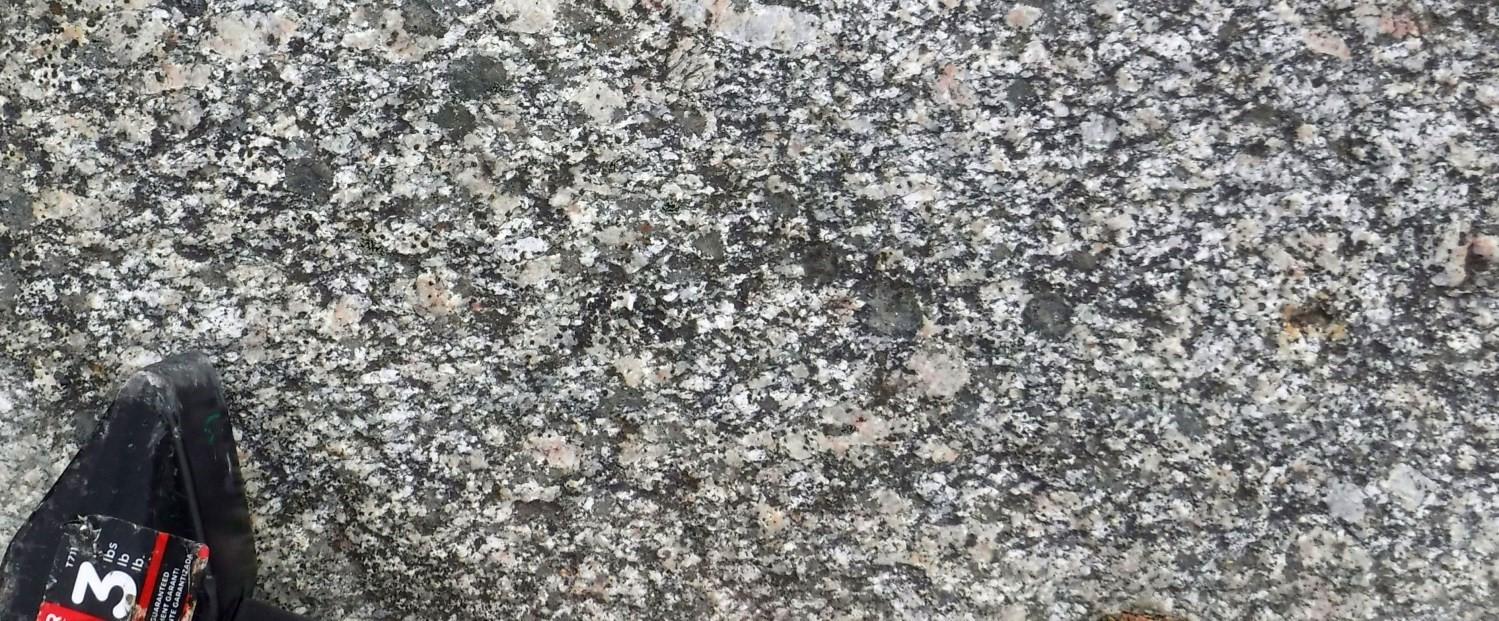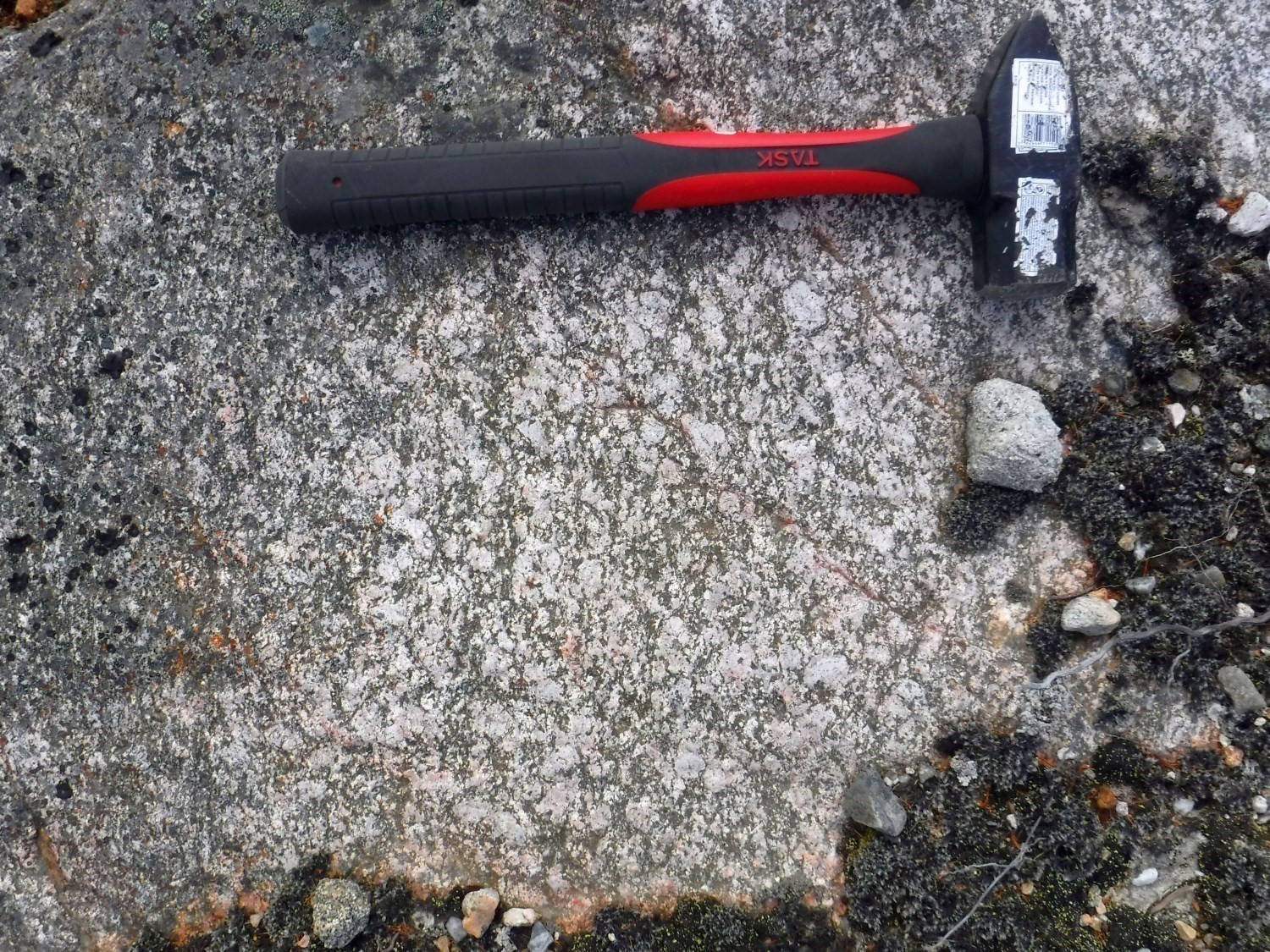
| Author: | Van der Leeden, 1994 |
| Age: | Paleoproterozoic |
| Stratotype: | None |
| Type area: | Hutte Sauvage Lake area (NTS sheets 24A02 and 24A07) |
| Geological province: | Churchill Province |
| Geological subdivision: | Mistinibi-Raude Lithotectonic Domain |
| Lithology: | Granitoids |
| Category: | Lithodemic |
| Rank: | Suite |
| Status: | Formal |
| Use: | Active |
None
Background
The “Déat Granite” was informally named by van der Leeden (1994) in the Hutte Sauvage Lake area. The unit was formally redefined as the Déat Suite by Charette et al. (2019) during compilation as part of the Southeastern Churchill Province (SECP) regional synthesis (Lafrance et al., 2018).
Description
Déat Suite 1 (pPdea1): Porphyraceous Granodiorite, Monzogranite and Quartz Monzodiorite
Unit pPdea1 consists of porphyraceous granodiorite, monzogranite and quartz monzodiorite associated with strong magnetic susceptibility. It includes some of the rocks of subunit F2a of van der Leeden (1994). The unit is characterized by a dark grey fine to medium-grained matrix containing 10 to 25% microcline phenocrystals 0.5 to 1.5 cm long (up to 6 cm locally). Microcline is also present as fine interstitial crystals in the matrix (10%). The rock is generally foliated, locally massive, rarely lineated. Ferromagnesian minerals make up 20 to 25% of the mode and consist of brown to green biotite, with some hornblende in places. When present, preferential orientation is given by the alignment of ferromagnesian minerals and stretching of microcline phenocrystals.
Accessory minerals are abundant (up to 5%) and generally form large euhedral crystals next to ferromagnesian minerals. They include, in order of importance, epidote, clinozoisite, sphene, allanite, apatite, zircon, opaque minerals and chlorite (free or replacing biotite). Thin sections show grain reduction along the phenocrystal edges, quartz zones with subgrain extinction, dented edges and deformed twinning, and kinked biotite. Phenocrystals often contain inclusions of all other minerals present, and plagioclase is moderately sericitized. Van der Leeden (1994) also reports trace fluorine north of the Déat River mouth.
Déat Suite 2 (pPdea2): Granite
Unit pPdea2 granite is homogeneous, magnetic, medium grained and massive to weakly foliated. It is greyish white in altered patina and pinkish grey in fresh exposure. It contains 5 to 7% biotite, 2% magnetite and 20 to 25% quartz.
Thickness and Distribution
Unit pPdea1 forms a N-S oriented intrusion, nearly 60 km long by 3 km wide (153 km2), through sheets 24A07 and 24A02 and part of sheet 23P15. It also contains a few small plutons <1 km long, bordering on the main intrusion. Unit pPdea2 is smaller (8 km2) and consists of an intrusion that is ~5 km long by 2 km wide, located in the northern portion of sheet 24A07. The Déat Suite is located in the north-central part of the Mistinibi-Raude Lithotectonic Domain.
Dating
None.
Stratigraphic Relationship(s)
The Déat Suite contains decimetric to metric layers of paragneiss and diatexite of the Mistinibi Complex, and gneiss enclaves of the Advance Complex.
Paleontology
Does not apply.
References
| Author(s) | Title | Year of Publication | Hyperlink (EXAMINE or Other) |
|---|---|---|---|
| LAFRANCE, I. – CHARETTE, B. – VANIER, M.-A. | Southeastern Churchill Province, Nunavik, Quebec, Canada: Geological Synthesis. Ministère de l’Énergie et des Ressources naturelles, Québec. Preliminary BG. | 2018 | Bulletin géologiQUE |
| CHARETTE, B. – LAFRANCE, I. – VANIER, M.-A. – GODET, A. | Mistinibi-Raude Domain, Southeastern Churchill Province, Nunavik, Quebec, Canada: Geological Synthesis. Ministère de l’Énergie et des Ressources naturelles, Québec. BG 2019-07. | 2019 | BG 2019-07 |
| VAN DER LEEDEN, J. | Géologie de la région du lac de la Hutte Sauvage, Territoire du Nouveau-Québec). Ministère des Ressources naturelles, Québec; MB 94-32, 108 pages et 2 plans. | 1994 | MB 94-32 |



